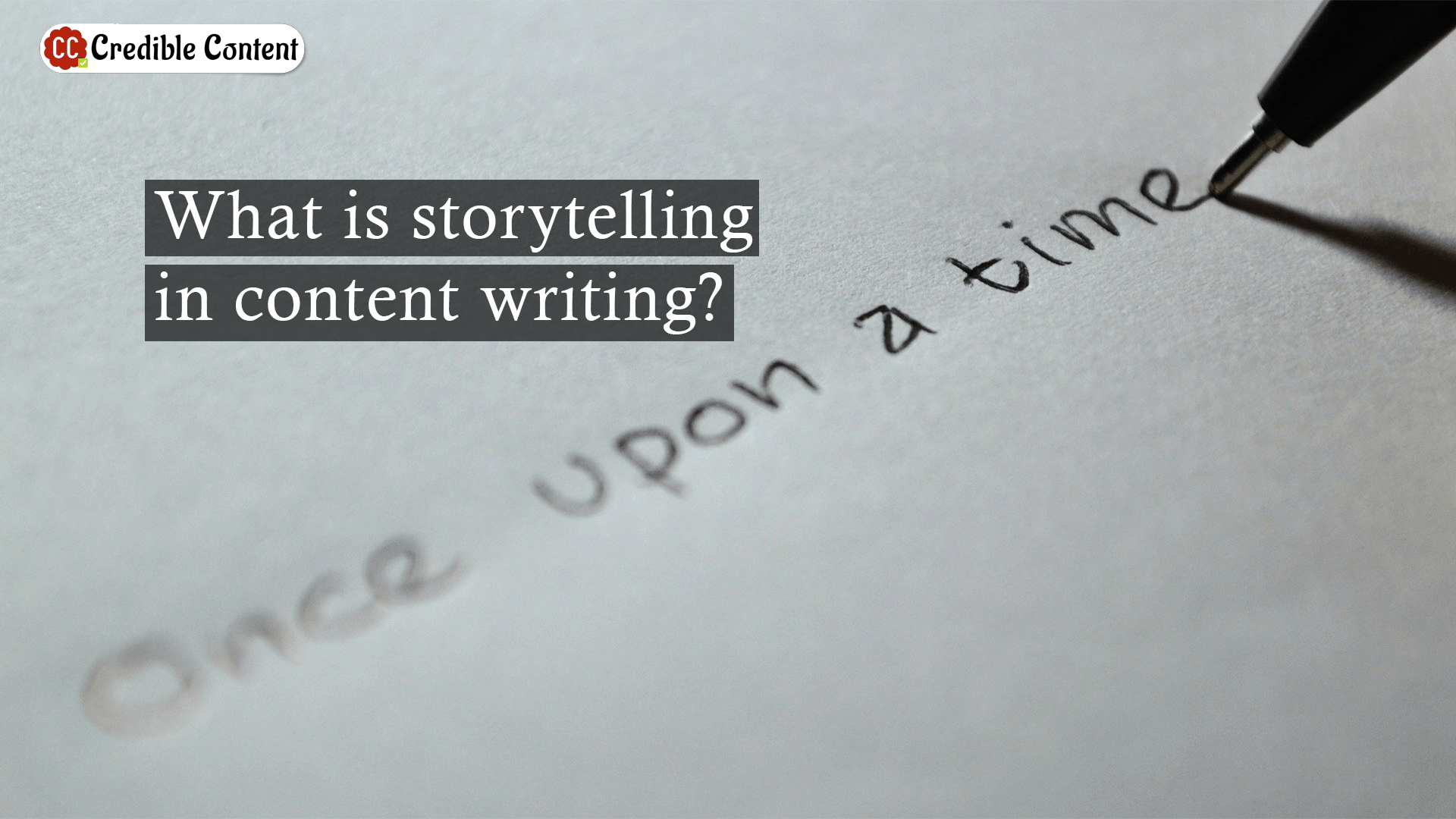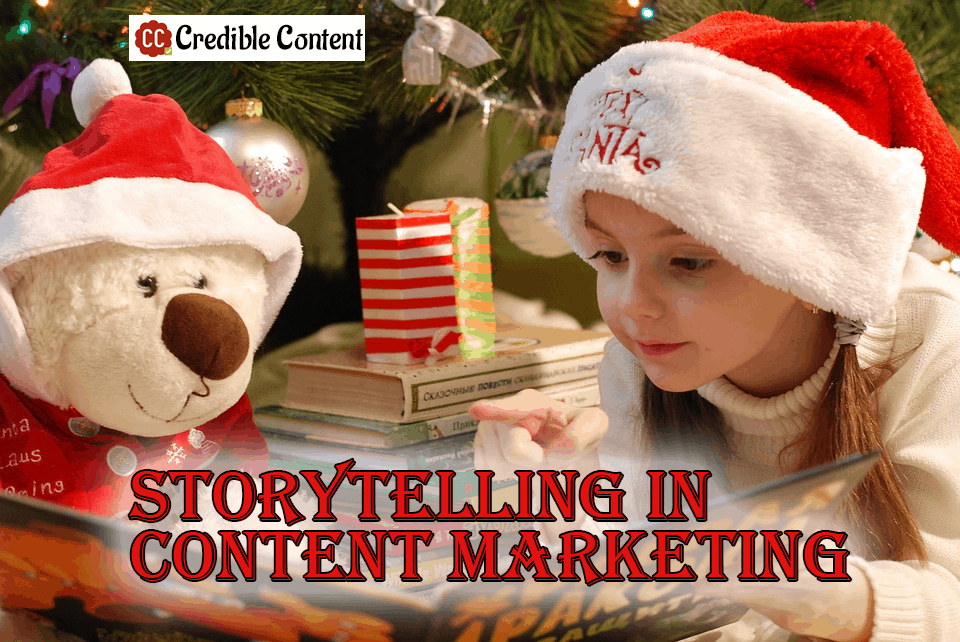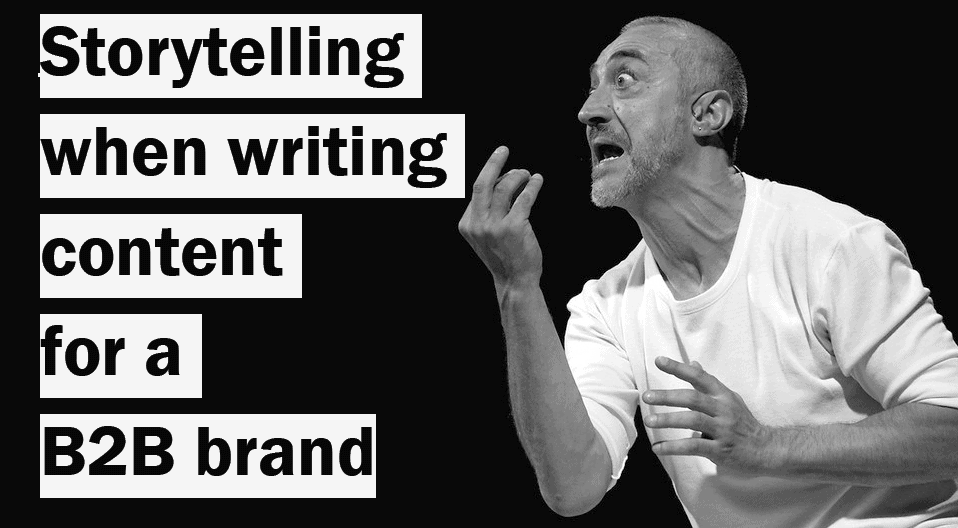Here is an example of using storytelling in content writing:
Once upon a time in the whimsical world of content writing, there was a witty wordsmith named Walter. Walter was known for his incredible storytelling skills and his ability to captivate readers with his humorous anecdotes. He believed that humor was the secret ingredient to creating effective content, and he had a hilarious anecdote to prove it.
One sunny day, Walter sat down at his desk, ready to craft a blog post about the benefits of a revolutionary cleaning product. Determined to make it engaging, he decided to infuse his writing with a healthy dose of humor. He began by concocting a tale about a clumsy cat named Mr. Whiskers and his epic quest to keep his owner’s house spotlessly clean.
With each paragraph, Walter wove a comedic narrative, detailing Mr. Whiskers’ misadventures with the cleaning product. He described how the cat mistook it for a tasty treat, resulting in a foamy fiasco that left the kitchen resembling a bubble bath. He vividly painted the picture of Mr. Whiskers slipping and sliding across the gleaming floors, turning cleaning time into a comical circus act.
As Walter typed away, he couldn’t help but chuckle at the absurdity of the story. He imagined readers giggling along as they visualized the chaos caused by a well-intentioned feline and a cleaning product gone awry. The more Walter embellished the tale, the more he realized the power of storytelling to entertain and engage.
When Walter finally published his blog post, the response was overwhelming. Readers flooded the comments section with laughter-filled messages, praising Walter for brightening their day and making cleaning seem like a whimsical adventure. The post went viral, garnering shares and likes across social media platforms, and even catching the attention of a renowned comedian who tweeted about it.
From that day forward, Walter knew that storytelling and humor were the dynamic duo that could transform mundane topics into entertaining content. He continued to regale his readers with funny anecdotes and lively narratives, reminding them that laughter is indeed the best remedy for engaging content.
In the realm of content writing, there exists a formidable tool that has the potential to captivate, engage, and convert readers like no other – storytelling.
Stories have an innate ability to connect with individuals on a deep and emotional level, making them a potent force in the world of marketing.
By employing the art of storytelling, content creators can weave narratives that resonate with their audience, leaving a lasting impact and driving them towards action.
Highlights:
- Storytelling is a powerful tool in content writing that captivates, engages, and converts readers.
- Stories connect with individuals on a deep and emotional level, making them effective in marketing.
- Content creators can use storytelling to create narratives that resonate with their audience.
- Storytelling goes beyond traditional product explanations and leaves a lasting impact.
In this blog post, we will delve into the essence of storytelling in content writing, explore its advantages over traditional product explanations, and unravel the techniques to craft compelling stories that leave a lasting impression.
Storytelling in content writing achieves the following:
- Captivates and mesmerizes readers, holding their attention.
- Engages the audience on an emotional and personal level.
- Inspires and motivates readers to take action.
- Establishes a strong connection and builds rapport with the audience.
- Creates a memorable and impactful experience for readers.
- Enhances brand storytelling and brand identity.
- Conveys complex information in a simple and relatable manner.
- Sparks curiosity and encourages readers to explore further.
- Evokes powerful emotions that resonate with the audience.
- Differentiates the content from competitors in a crowded market.
- Increases brand awareness and recognition.
- Improves brand perception and credibility.
- Drives audience engagement and interaction.
- Facilitates better understanding and retention of information.
- Generates word-of-mouth marketing through shareable stories.
- Boosts conversion rates by influencing purchasing decisions.
- Creates a sense of authenticity and trustworthiness.
- Inspires loyalty and a strong connection with the brand.
- Enables storytelling across various platforms and channels.
- Allows for creative expression and unique brand voice.
What is Storytelling in Content Writing?
Storytelling in content writing involves harnessing the power of narrative to convey a message, share an experience, or elucidate the benefits of a product or service.
It goes beyond mere facts and figures, offering a more relatable and humanized approach to communication. By incorporating a real-life example featuring a person or a business, storytelling creates a bridge between the audience and the subject matter, enabling them to empathize and connect on a personal level.
It adopts a conversational style, steering clear of jargon and technicalities, and instead focuses on the individual, their struggles, and the eventual resolution that your solution provides.
The Elements of a Compelling Story in Content Writing
Just like any other story, a well-crafted narrative in content writing comprises various elements that work harmoniously to captivate and engage the audience. Let’s break down these components and understand their significance:
Character
Every story needs a protagonist, a relatable figure that the audience can root for. Introduce a named person or a business entity as the central character in your story to create an emotional connection.
Environment
Set the stage for your narrative by describing the environment in which the story unfolds. Paint a vivid picture that immerses the audience, allowing them to visualize the context and better understand the challenges faced.
Plot
Your story should have a clear plotline that guides the audience through a series of events and developments. Create a compelling arc that builds tension and keeps the readers invested in the outcome.
Initial Setting and Buildup
Lay the groundwork by establishing the initial setting and introducing the conflict or problem. Provide relevant background information to enable the audience to comprehend the magnitude of the challenge.
Conflict
Introduce a conflict or obstacle that the character must overcome. This could be a problem, a setback, or a pain point that resonates with your target audience.
Resolution
Offer a resolution to the conflict, showcasing how your product or service came to the rescue. Highlight the positive impact it had on the character’s life or business, emphasizing the transformation and the resulting benefits.
Moral of the Story
Whenever possible, conclude your story with a moral or key takeaway that encourages the audience to take action. Make it clear how your product or service can help them achieve similar outcomes and address their own challenges.
Why Storytelling Triumphs Over Traditional Explanations During Content Writing
- The Power of Connection
- Engagement and Retention
- Relatability and Empathy
- Memorable and Shareable Content
Now that we have explored the fundamental elements of storytelling, it is crucial to understand why this approach outshines traditional methods of explaining the benefits of products and services during content writing. Here are some compelling reasons:
The Power of Connection
We, as humans, are wired to respond to stories. From an early age, we are captivated by tales that transport us to different worlds and evoke a range of emotions.
When you tell a story, you create an emotional bond with your audience, fostering a sense of connection that is hard to achieve through dry product descriptions.
Engagement and Retention
Have you ever noticed how time seems to fly when you’re engrossed in a captivating story? Stories have an uncanny ability to captivate attention and hold it until the very end.
By weaving narratives that resonate with your audience, you can ensure that your message remains imprinted in their minds, long after they’ve finished reading.
Relatability and Empathy
Stories enable us to step into the shoes of others, to experience their struggles, triumphs, and emotions.
By sharing stories of real people who have benefited from your product or service, you allow your audience to relate on a personal level. This engenders empathy and fosters a deeper understanding of how your solution can positively impact their lives.
Memorable and Shareable Content
Stories are inherently memorable, making them more likely to be retained and shared with others.
When you craft a compelling narrative, your audience becomes not just consumers of content, but advocates who willingly spread the word about your brand and its offerings.
Crafting Compelling Stories that Resonate
- Know Your Audience
- Be Authentic and Transparent
- Use Emotional Appeal
- Show, Don’t Tell
- Create a Compelling Opening and Hook
- Introduce Conflict and Tension
- Use Vivid Descriptions and Imagery
- Utilize Succinct and Impactful Language
Now that we’ve established the immense potential of storytelling in content writing, it’s time to explore how you can create compelling stories that leave a lasting impression on your readers. Follow these techniques to elevate your storytelling prowess:
Know Your Audience
To create a story that resonates, you must have a deep understanding of your target audience. Conduct thorough research to uncover their pain points, desires, and motivations. This knowledge will help you tailor your narrative to their specific needs and aspirations.
Authenticity and Transparency
Authenticity is the bedrock of compelling storytelling. Be genuine and transparent in your narrative, allowing your audience to connect with the real people and experiences behind your brand. Avoid exaggerations or false claims, as they undermine the trust you aim to build.
Emotional Appeal
Emotions are at the heart of storytelling. Tap into your audience’s emotions by highlighting the challenges they face and the transformative power of your solution. Use powerful and evocative language to create an emotional response that resonates with your readers.
Show, Don’t Tell
Instead of simply stating the benefits of your product or service, show the audience how it solves a problem or improves a situation. Use descriptive language and concrete examples to paint a vivid picture of the positive outcomes achieved through your solution.
Compelling Opening and Hook
Grab your audience’s attention right from the start with a compelling opening that piques their curiosity. Craft a hook that entices them to read further, eager to unravel the story’s mysteries and discover the resolution.
Conflict and Tension
Engage your audience by introducing a conflict or obstacle that captures their interest. Build tension throughout the story, keeping them invested in the outcome and eager to witness the resolution.
Vivid Descriptions and Imagery
Paint a picture with your words by using vivid descriptions and imagery. Engage the senses of your audience, allowing them to visualize the scenes, characters, and emotions in their minds. This immersive experience will leave a lasting impact.
Succinct and Impactful Language
Utilize the power of concise and impactful language to deliver your message effectively. Craft short and punchy sentences that drive home your key points and maintain the readers’ engagement.
Can You Use Negative Storytelling in Content Writing?
- Grab Attention with a Powerful Hook
- Identify the Pain Points
- Relate with Empathy
- Introduce Conflict and Obstacles
- Offer Solutions and Overcome Challenges
- Highlight Transformation and Success
- End with a Call to Action
While positive stories have their place, there is another storytelling technique that can be equally impactful: negative storytelling.
By strategically utilizing negative storytelling in your content writing, you can create a compelling narrative that resonates with readers, evokes emotions, and drives them to take action.
Here is how you can effectively use negative storytelling to enhance your content writing.
Grab Attention with a Powerful Hook
To effectively use negative storytelling, start by crafting a powerful hook that grabs your readers’ attention from the very beginning.
Begin with a provocative statement or a vivid description of a problem or challenge. This will create an immediate sense of intrigue and curiosity, compelling readers to continue reading to discover the resolution.
Example: “The Costly Mistake That Nearly Ruined My Business – and How You Can Avoid It.”
Identify the Pain Points
Negative storytelling shines when it addresses pain points and challenges that your audience may be facing.
Identify the specific pain points that your product or service addresses and highlight them within your story. This will make your readers feel understood and validated, creating a stronger emotional connection.
Example: “Running a business is a constant battle. Long hours, sleepless nights, and the fear of failure. I know because I’ve been there.”
Relate with Empathy
Empathy is a powerful tool in negative storytelling. Put yourself in your readers’ shoes and share personal anecdotes or real-life examples that demonstrate your understanding of their struggles.
Show empathy towards their pain points and challenges, making them feel heard and supported.
Example: “I vividly remember the sleepless nights, the overwhelming stress, and the constant uncertainty. It felt like the weight of the world was on my shoulders.”
Introduce Conflict and Obstacles
In negative storytelling, conflict and obstacles play a crucial role in creating tension and driving the narrative forward.
Introduce the challenges that your audience faces and highlight the potential negative outcomes of not addressing these issues. This will heighten the sense of urgency and emphasize the importance of your solution.
Example: “Just when I thought things couldn’t get any worse, a series of unforeseen setbacks pushed my business to the brink of collapse.”
Offer Solutions and Overcome Challenges
While negative storytelling focuses on challenges and problems, it is essential to provide solutions and show how these challenges can be overcome.
Introduce your product or service as the solution to the problems presented in your story. Emphasize the positive outcomes that can be achieved by implementing your solution.
Example: “By implementing a strategic marketing plan and leveraging cutting-edge technology, I was able to turn the tide and transform my struggling business into a thriving success.”
Highlight Transformation and Success
Negative storytelling becomes even more powerful when it showcases the transformation and success that can be achieved by using your product or service.
Paint a vivid picture of how your solution has changed lives, solved problems, or improved situations. Use testimonials, case studies, or personal success stories to provide concrete evidence of the positive impact.
Example: “Today, my business is thriving, and I’ve achieved financial stability. I owe it all to the power of embracing innovation and finding the right solutions.”
End with a Call to Action
As with any effective content writing, it is crucial to end your negative storytelling piece with a clear and compelling call to action.
Encourage your readers to take the next step, whether it’s signing up for a free trial, contacting your team, or making a purchase. Make it easy for them to take action and experience the positive outcomes you’ve presented in your story.
Example: “Don’t let your challenges hold you back. Take control of your destiny and transform your life today. Visit our website and start your journey towards success.”
Negative storytelling in content writing can be a powerful technique to engage, connect, and inspire action in your readers.
By grabbing attention, addressing pain points, showing empathy, introducing conflict, offering solutions, highlighting transformation, and ending with a compelling call to action, you can effectively leverage the power of negative storytelling to create impactful content that resonates with your audience and drives results.
Using Positive Storytelling in Content Writing
- Start with a Captivating Opening
- Introduce Engaging Characters
- Highlight the Journey of Transformation
- Incorporate Descriptive Language
- Utilize Testimonials and Success Stories
- Inspire with a Call to Action
While negative storytelling has its place, positive storytelling offers a compelling alternative that can uplift, motivate, and create a lasting impact on readers.
By harnessing the power of positive storytelling in your content writing, you can create narratives that resonate with your audience, foster a sense of connection, and drive them towards positive outcomes. In this article, we will explore effective strategies to use positive storytelling in content writing.
Start with a Captivating Opening
To effectively use positive storytelling, begin with a captivating opening that immediately grabs your readers’ attention.
Craft a compelling hook, such as an intriguing question, an engaging anecdote, or a fascinating statistic. This will create a sense of curiosity and entice readers to continue exploring your story.
Example: “Imagine a world where dreams come true and every challenge is a stepping stone to success. This is the story of how one person’s determination transformed their life and ignited a ripple effect of positive change.”
Introduce Engaging Characters
Characters play a vital role in positive storytelling. Introduce relatable and inspiring characters that embody the values and aspirations of your audience.
Develop their personalities, motivations, and challenges, making them come alive in your readers’ minds. This will enable your audience to connect emotionally with the characters and become invested in their journey.
Example: “Meet Emily, a resilient entrepreneur with an unwavering passion for making a difference. Despite facing numerous setbacks, she never lost sight of her vision and continued to persevere against all odds.”
Highlight the Journey of Transformation
Positive storytelling thrives on showcasing the journey of transformation. Take your readers on an emotional roller coaster, guiding them through the ups and downs of your character’s experience.
Emphasize the lessons learned, personal growth, and triumphs along the way. This will inspire and motivate your readers, showing them that positive change is possible.
Example: “Through countless challenges and moments of doubt, Emily pushed forward, embracing failure as a steppingstone to success. With each setback, she learned valuable lessons, honed her skills, and grew stronger. Her journey of transformation became a beacon of hope for others.”
Incorporate Descriptive Language
In positive storytelling, the use of vivid and descriptive language is paramount. Paint a rich and immersive picture with your words, appealing to the senses and evoking emotions.
Create a visual and emotional landscape that allows your readers to experience the story alongside your characters. This will intensify their engagement and forge a deeper connection.
Example: “The golden rays of the sun danced upon the horizon, casting a warm glow as Emily stood atop the mountain peak, a symbol of her hard-fought victory. The exhilaration of overcoming challenges surged through her veins, filling her with an indescribable sense of accomplishment.”
Utilize Testimonials and Success Stories
To strengthen the impact of positive storytelling, incorporate real-life testimonials and success stories. Share the experiences of individuals who have benefited from your product, service, or guidance.
These authentic accounts add credibility and provide concrete examples of the positive outcomes that can be achieved. Your readers will be inspired by these real-life stories and more inclined to take action.
Example: “John, a client who embarked on the same journey as Emily, transformed his life using the strategies and techniques she shared. Today, he stands as a shining example of what is possible when you embrace positivity and take bold action.”
Inspire with a Call to Action
As with any effective content writing, positive storytelling should conclude with a clear and inspiring call to action. Encourage your readers to take the next step towards their own journey of positive transformation.
Use powerful and action-oriented language to compel them to act, whether it be signing up for a newsletter, attending a workshop, or making a purchase.
Example: “Are you ready to unleash your true potential and embrace a life of positivity? Join our community of like-minded individuals today and embark on your own transformative journey. Take the first step towards a brighter future.”
Incorporating positive storytelling in your content writing can be a game-changer. It has the ability to uplift, motivate, and inspire your audience, fostering a sense of connection and driving them towards positive action.
By implementing these strategies and infusing your narratives with positivity, you can create content that resonates deeply with your readers, leaving a lasting impact and shaping their lives for the better.
Embrace the power of positive storytelling and unlock the true potential of your content writing.
Harness the Untapped Potential of Storytelling
In a world inundated with information, it is imperative to stand out and capture the attention of your audience.
By leveraging the power of storytelling in your content writing, you can transcend the realm of mundane explanations and forge a profound connection with your readers.
Remember, a well-crafted story has the potential to move mountains, inspire action, and drive meaningful change. Embrace the art of storytelling, and unlock the untapped potential that lies within your words.







